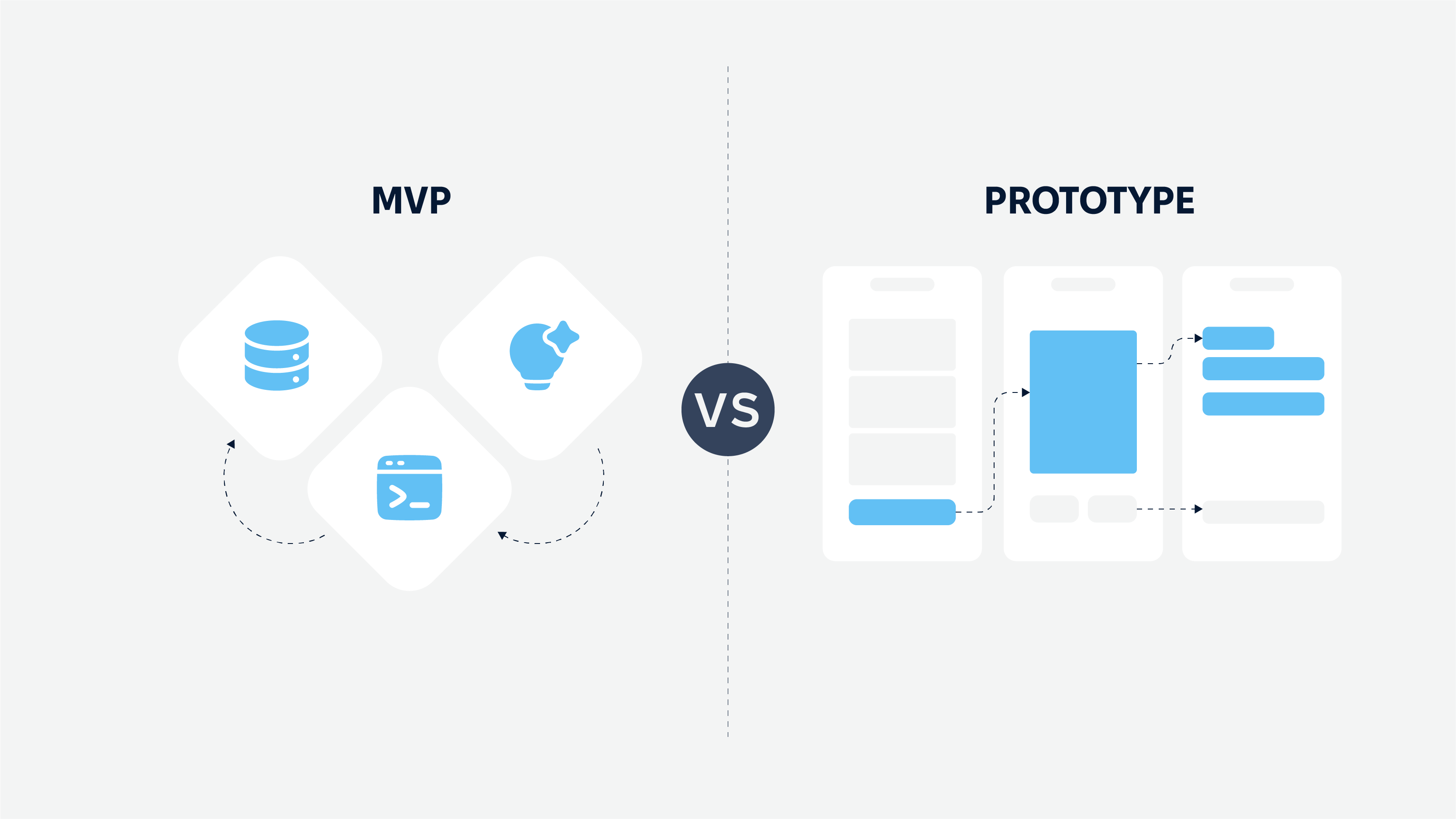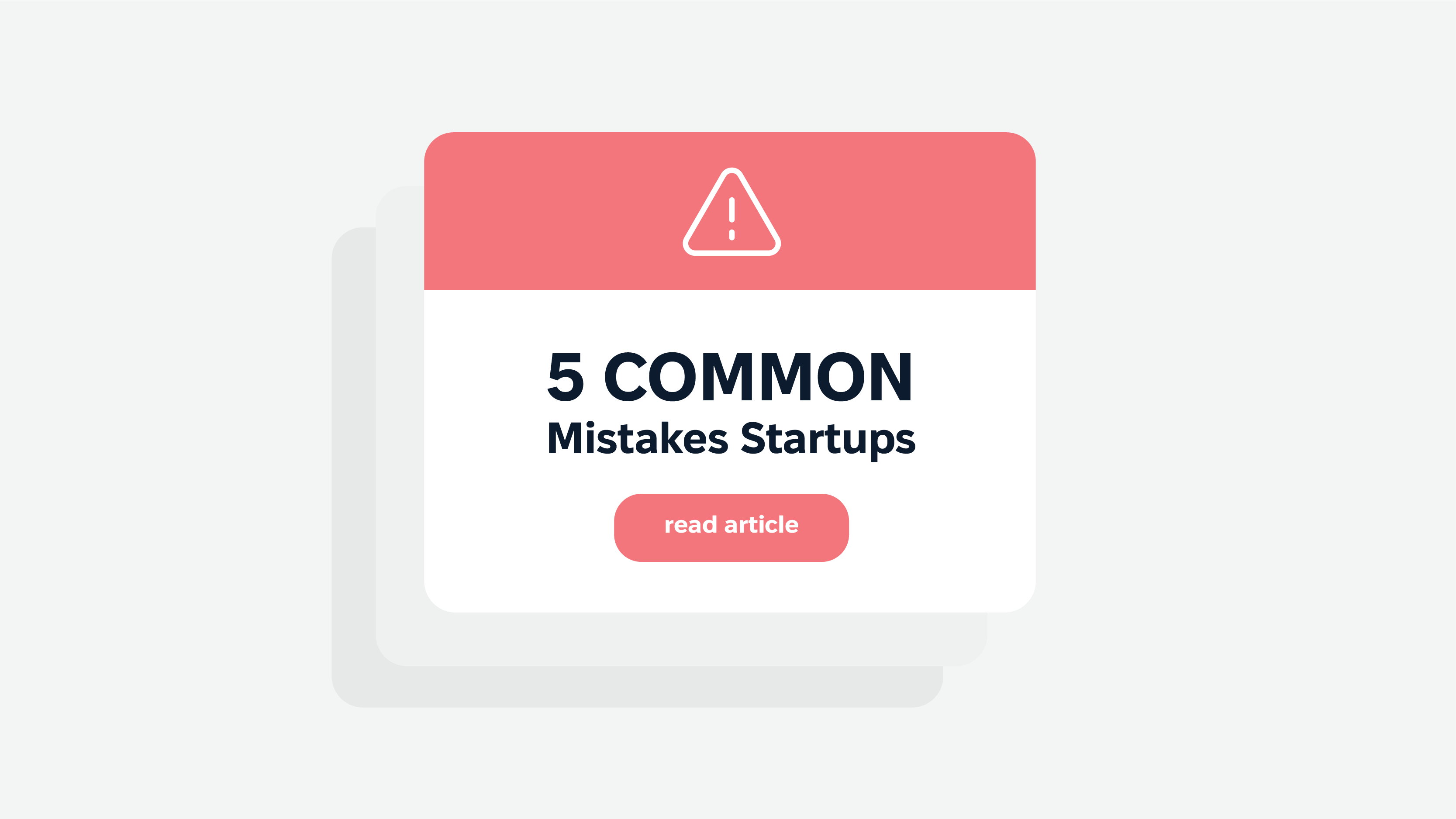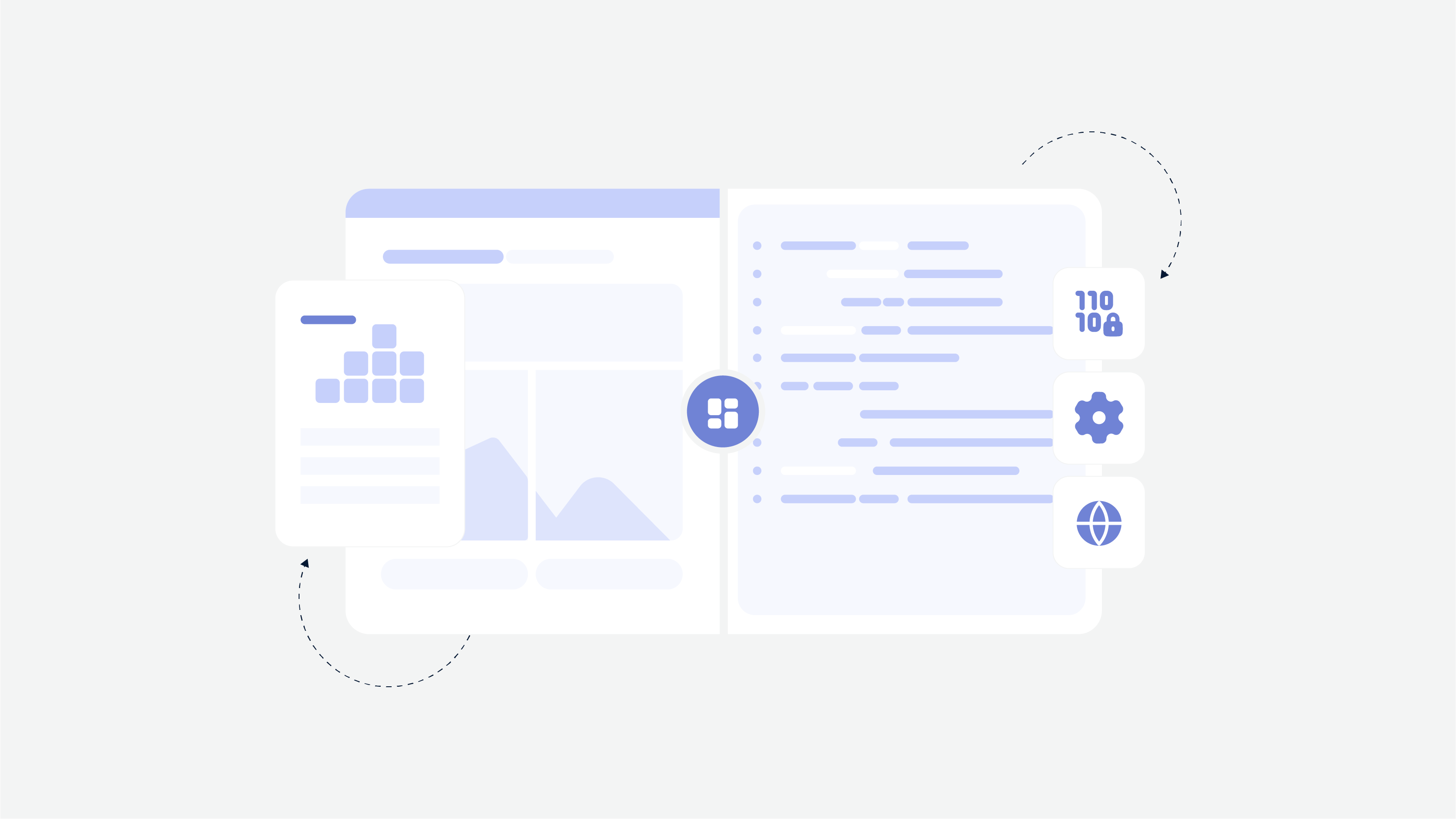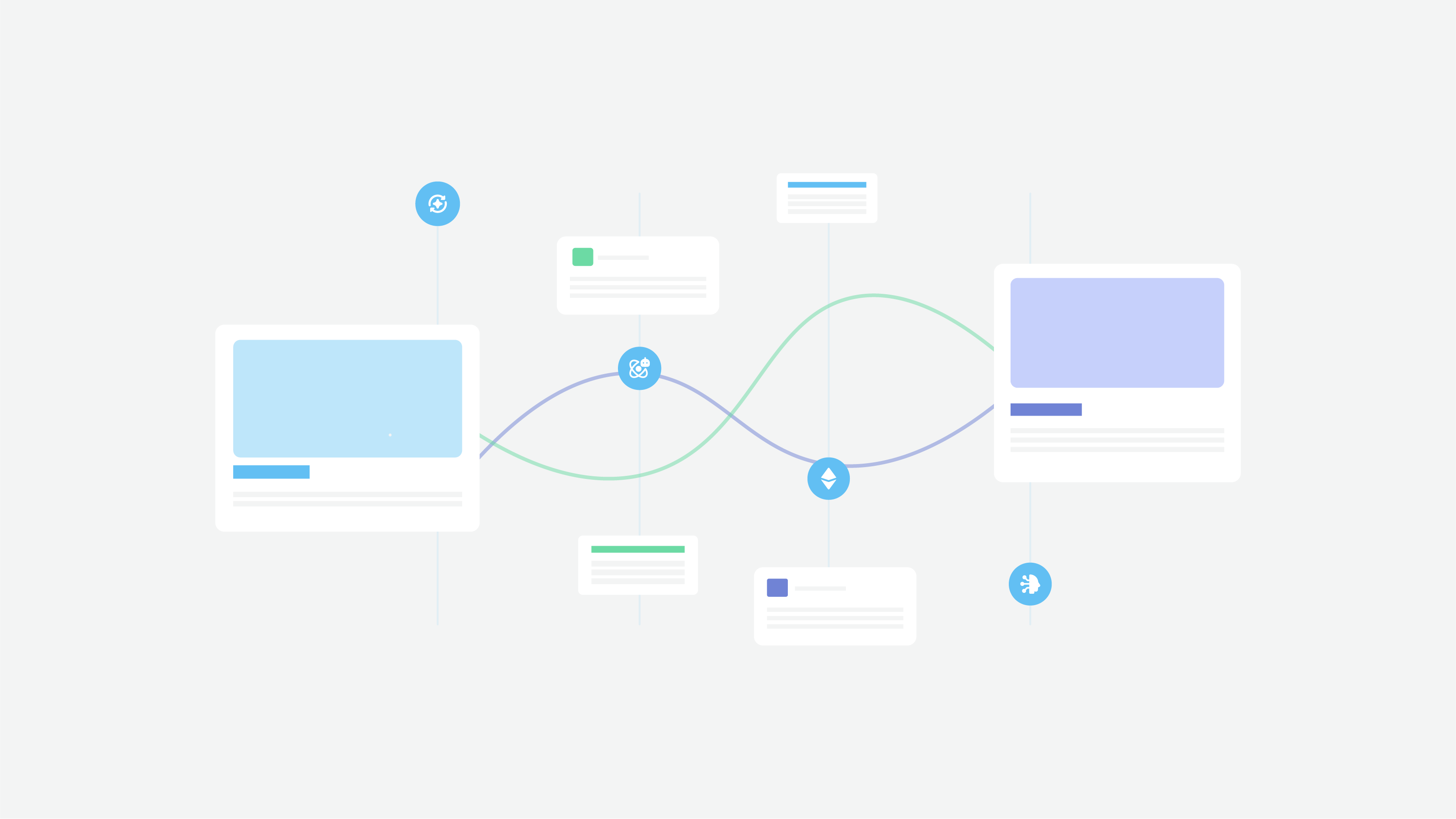You have probably seen the information about HIPAA-compliance in our article about doctor appointment app development and some healthcare-related articles. The US government adopted HIPAA regulation (Health Insurance Portability And Accountability Act) to ensure the protection of personal healthcare information.
It is highly essential to comply with HIPAA regulations if you plan to build a healthcare app in the US region. We will shed light on what HIPAA is, the HIPAA compliance requirements checklist, consequences for violations, mobile app HIPAA compliance, and many other nuances.
What Is The Purpose Of HIPAA?
HIPAA is a federal law adopted in 1996. The 104th United States Congress enacted it. Its primary purpose is to provide the confidentiality of disease history and personal patients’ data. It was the first law that contained security rules indicating comprehensive protection of health information confidentiality on the federal level.
Why was HIPAA created? HIPAA rules were created to legally protect the information about patients’ health conditions without impacting a treatment plan, healthcare organizations’ workflow, or treatment quality.
Healthcare organizations and medical staff are subject to HIPAA rules since they can transfer the patient’s electronic format data. Thus, all healthcare software created in the USA and for US citizens must be HIPAA-compliant.
Why Is HIPAA Important To Patients And Healthcare Organizations?
The idea of HIPAA was a real breakthrough since both patients and organizations needed it. Let’s define the main benefits of new regulation for both parties.
HIPAA for patients. Of course, patients were the first ones the HIPAA regulation was created for. HIPAA protects health plans, personal information, treatment history, and it also requires all healthcare providers and related business associates to follow all HIPAA rules.
It is worth noting that healthcare organizations were not interested in personal data breaching and exposing sensitive data even before the HIPAA enactment. However, HIPAA was meant to stipulate penalties and consequences for possible breach of confidentiality substantively.
HIPAA for organizations. Healthcare providers also got some benefits of HIPAA compliance. HIPAA stipulates standards and rules for data transfer and its protection and guides to work efficiency improvements. Due to standardized codes and identifiers, HIPAA simplified the process of data transfer between healthcare providers.
Who Is Required To Follow HIPAA Requirements?
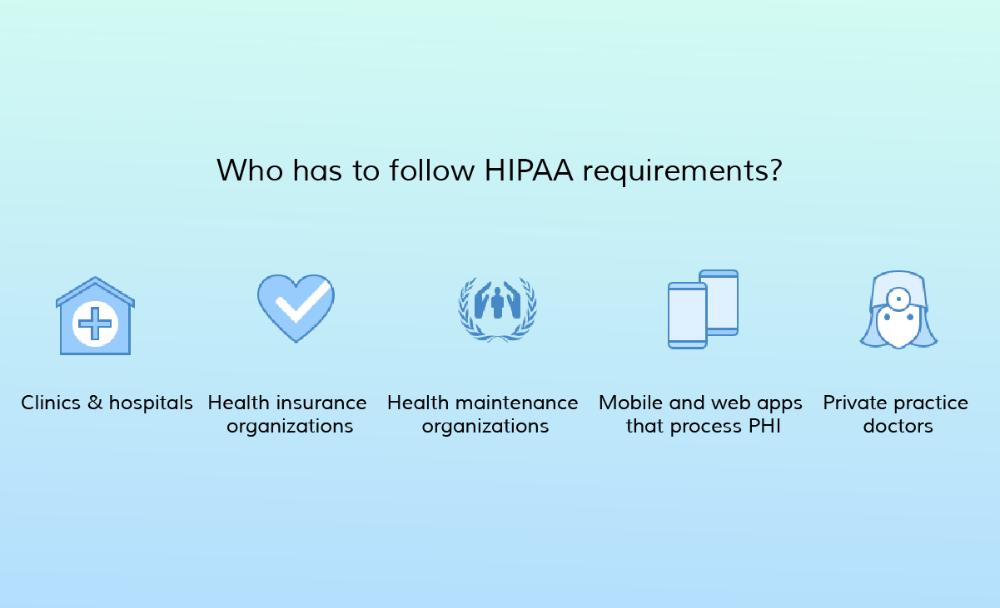
It is necessary to determine who should follow HIPAA requirements. HIPAA covers PHI (protected health information), and it is defined as any data found in medical records of patients, including treatment, personal details, diagnosis, etc.
All clinics, hospitals, health insurance organizations, health maintenance organizations, and private practice doctors must follow HIPAA requirements. It also concerns mobile and web apps that process PHI and share it between the entities mentioned above. Lab results, prescriptions, billing information, etc. are covered by the HIPAA requirements.
However, such data like steps taken, weight, calories burnt, heart rate level, etc. don’t fall under HIPAA rules. It means that if you are building a HIPAA-compliant software, you should know HIPAA doesn’t cover that data mentioned above. Thus, manufacturers of fitness trackers don’t need to follow the HIPAA compliance software checklist for their proprietary apps.
Is My Mobile App Required To Comply With HIPAA?
It’s a good question we want to answer. If you don’t know whether you need to follow HIPAA requirements or not, you will find a short checklist below that will help you make the right decision.
#1. If your app collects, stores, or shares personal health information (test results, individual details, treatment plans, disease history, billing/health insurance info) with any other healthcare providers, the HIPAA compliance is required. If no, proceed to the next point.
#2. If your app has potential capabilities to collect, store, process, and share personal health information between healthcare providers, your app falls under HIPAA-compliant software development. If no, your software doesn’t need to follow HIPAA rules.
The Violation Of HIPAA Compliance Requirements
Medical app development is a complex process that requires large investments and reliable protection of personal health data and related processes. Healthcare apps that fail to comply with HIPAA are subject to penalties and sanctions. And you need to know how large penalties are if your app violates any rule of HIPAA.
The first level is called “Unknowing.” It means that violation of rule occurred unknowingly, and penalties range from $100 to $50,000 per violation, with an annual maximum of $25,000 for repeat violations.
The second level is a “Reasonable cause.” The covered entity knew about the violation by exercising reasonable diligence. Penalties range from $1,000 to $50,000 per violation, with an annual maximum of $100,000 for repeat violations.
The third level is wilful neglect but timely corrected. The covered entity violated HIPAA rules wilfully, but it was corrected within the required period. Penalties range from $10,000 to $50,000 per violation, with an annual maximum of $250,000 for repeat violations.
The fourth level is wilful neglect but not corrected. The penalty is $50,000 per violation, with an annual maximum of $1,5 million for repeat violations.
However, criminal penalties can also be applied. Permanent wilful disclosure of personal health information may be the reason for imprisonment for up to 10 years, depending on the extent of the damage.
HIPAA Compliance Checklist

Let’s talk about the HIPAA rules substantively. HIPAA contains five main rules any healthcare organization should comply with. You will find below each rule with a detailed description.
The Privacy Rule. The first HIPAA rule contains primary information about the requirements for PHI protection. Thus, any information related to patients and their data shouldn’t be disclosed to a third party. Besides, the Privacy Rule stipulates the rights of healthcare providers and patients.
The Security Rule. This rule describes all data protection requirements, how it should be protected, how to analyze, and prevent security risks. All covered entities must regularly conduct a risk analysis to ensure data protection and avoid a data breach.
The Enforcement Rule. It covers provisions related to the HIPAA violation and penalties amount depending on the level of violation. We have explicitly described the consequences of a breach in the previous section.
The Breach Notification Rule. If a data breach occurs, liable healthcare providers must notify all affected patients within 60 days, in case the number of these patients doesn’t exceed 500 individuals. Also, the Office of Civil Rights should be notified within the same period. If the number of affected patients exceeds 500 individuals, then the liable organization must inform the media as well.
The Omnibus Rule. This rule was added in 2013, and its main purpose was to modify and supplement all other four rules mentioned above. The Omnibus Rule pays a lot of attention to business associates’ definition and their roles. For example, it stipulates that business associates must also notify about any data breach to the covered entity.
HIPAA-Compliant Software Requirements
If you already determined that your app must comply with HIPAA, you need to single out the requirements for the HIPAA compliance software development.
Although a software development company will do the most complicated job, and skilled specialists should be aware of HIPAA requirements when creating your software, you also need to know about the basics.
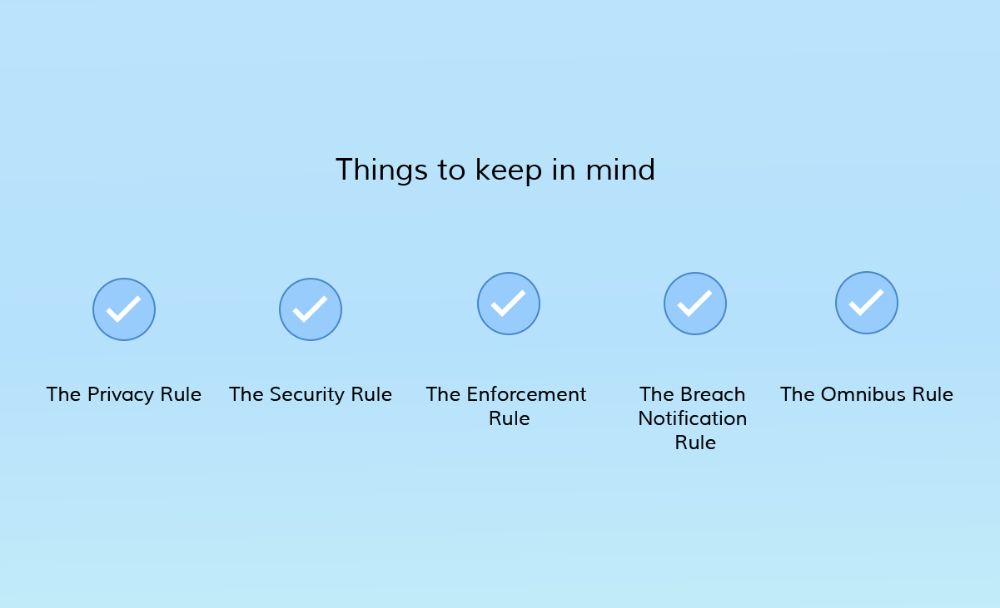
Authentication. Medical app developers must build a robust authentication system to prevent ungranted access to a healthcare app. It means that PIN code, one-time security code, password, or biometric data must be used to protect user authorization. And according to the HIPAA rules, apps must contain at least two authentication methods of the listed above.
A remediation plan. Your software must include the plan that will describe the responsibilities of parties involved in PHI processing in case of a data breach. Users should know everything about the software security, and it directly impacts their loyalty. Users want to trust your software and be confident in the protection of their data.
A disaster recovery plan (DRP). It’s another plan that describes main activities during the threat or attack. It will help users navigate through the main steps. They will find instructions on what to do next. Also, the recovery plan and time frame will be contained in a DRP requirement. In fact, a DRP is a plan that allows users to be prepared for any circumstances.
Access monitoring. Your IT maintenance team should analyze activity logs and identify any attempts of ungranted access. If malefactors want to hack any user’s account, the IT team will get a notification and take appropriate action. Also, it is necessary to add automated log-offs — if a patient or doctor forgets to log out, the system will close the account automatically within the indicated time.
Data backup. The last requirement to follow when creating HIPAA-compliant software is a data encryption and backup. Developers must use reliable encryption protocols that duly protect all personal health information. Also, all information must have a few copies on different servers to be restored in case of any crashes or errors. The IT team must control the condition of security and respond to any alerts immediately.
A HIPAA Minimum Necessary Standard: Another Regulation To Consider
For your information, you should know about the minimum necessary rule/standard conception. The HIPAA minimum necessary standard applies to business associates. The core of the standard is that protected health information must be disclosed or requested only when there is a reasonable necessity.
Business associates of covered entities (healthcare providers) are required to follow the HIPAA regulations to protect health information. Still, they can disclose it to the US Department Of Health and Human Services (HHS) when HHS wants to verify the HIPAA compliance of services provided.
Thus, the HIPAA’s minimum necessary rule means that third parties involved in healthcare data processing and storing must comply with relevant rules only. Still, they don’t need to be fully compliant.
How To Get HIPAA Certification
Many entrepreneurs who create medical apps want to know how to get a HIPAA compliance certification. We have good news for you — you don’t need to get any HIPAA certificates, it is not legally obliged.
Covered entities must conduct periodic HIPAA compliance tests and analyze security measures. However, it is recommended to hire a HIPAA compliance officer — a specialist who will perform all assessments professionally and effectively.
By the way, the Security Rule of HIPAA states that it is necessary to perform compliance training for all employees and subcontractors. So HIPAA compliance officer will be the right person to assist.
Conclusion
Finally, we would like to draw some conclusions from our article. If you want to build a healthcare software that processes US residents’ data, it must be HIPAA-compliant, and it should comply with all required rules. Otherwise, the penalty will be imposed or even a prison sentence.
Therefore, you need to hire a software development team that knows what HIPAA is and how to make an app keeping up with all HIPAA rules. And it doesn’t mean that you should hire US-based developers only. You can outsource the development process and save your budget.
Outsourcing company like Cadabra Studio has expertise in healthcare app development, so we know firsthand how to build your HIPAA-compliant software. Do you need a detailed estimate for your project or any tips from professionals for your project? Contact our managers and ask your questions — they will help you in any case.



